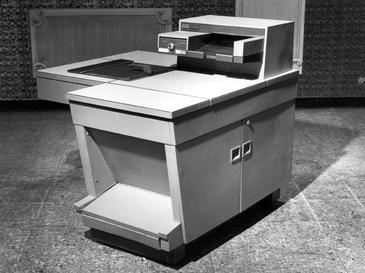Photocopiers have become one of the essential tools in our daily lives. We have all used photocopiers at one time or another; to copy documents or pages from books for work or study. Just press a button on the copying machine and a copy of the document comes out at the other end. How does this machine work, and who was the inventor who came up with this significant idea?
The world’s first copying technology was the duplicating machine invented by James Watt, the Scottish instrument maker and inventor. In 1779, he started experimenting methods to make copies of his research papers and drawings. Eventually, he came up with idea of pressing the original page against a thin translucent tissue paper producing a reversed copy from the back. Watt made many refinements to his machine before registering his patent in 1780. This invention had the advantage of producing an exact copy and was used for duplicating drawings effectively.
While working at the patent office in New York, Chester Carlson, an American patent attorney, part time researcher, and inventor, was frustrated by the difficulty, time consuming, and expense of copying large numbers of documents. This motivated him to conduct experiments until he found a method of transferring images from one piece of paper to another using a method known as “electrophotography”, which was changed later on to “Xerography”, meaning “dry writing” in Greek.
Carlson discovered that, when certain chemicals or metals are exposed to light, its conductivity—flow of electrons—increases. He, thus, used a zinc plate covered with sulphur, and placed a microscope slide with the words “10-22-38 Astoria” on the top of more sulphur under bright light. When the slide was removed, a mirror image of the words remained; he named his first copying machine “10-22-38 Astoria”.
It took Carlson several years to find an investor to help him develop his machine; more than twenty companies turned him down, among which was IBM, which believed that there was no significant market for photocopiers. In 1944, a company named Battelle Memorial Institute agreed to help Carlson improve his process. In 1946, a photographic paper manufacturer known as Haloid signed an agreement with Carlson and Battelle; the Haloid company later became Xerox Corporation.
It was not until 1959 that Xerox produced the first actual automated copier machine. The 914 copier machine, which marked a phenomenal success to Xerox, was able to make copies quickly at the touch of a button. Over the following twenty years, Xerox introduced more than 24 new products that changed the world.

Today, xerography is a foundation stone of the worldwide copying industry, including Xerox and other corporations that produce and market photocopier machines. The modern document duplication technology developed other digital machines, such as scanners and printers, which also depend on the xerography technique.
References
bbc.co.uk
inventors.about.com
xerox.com